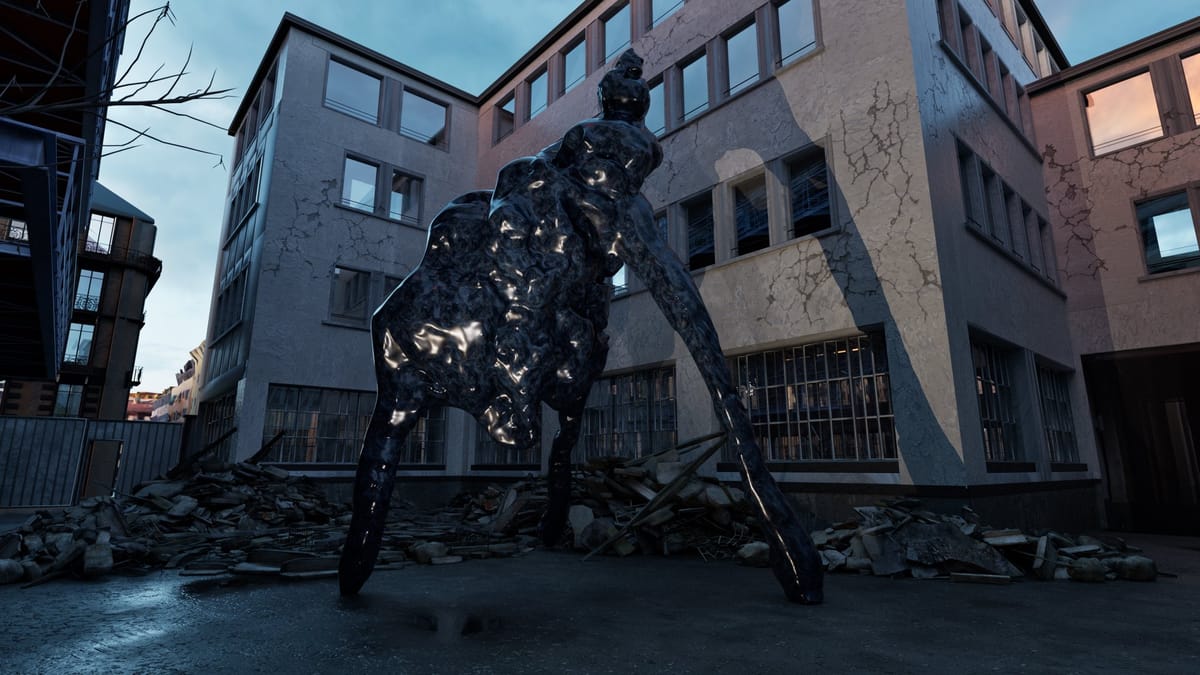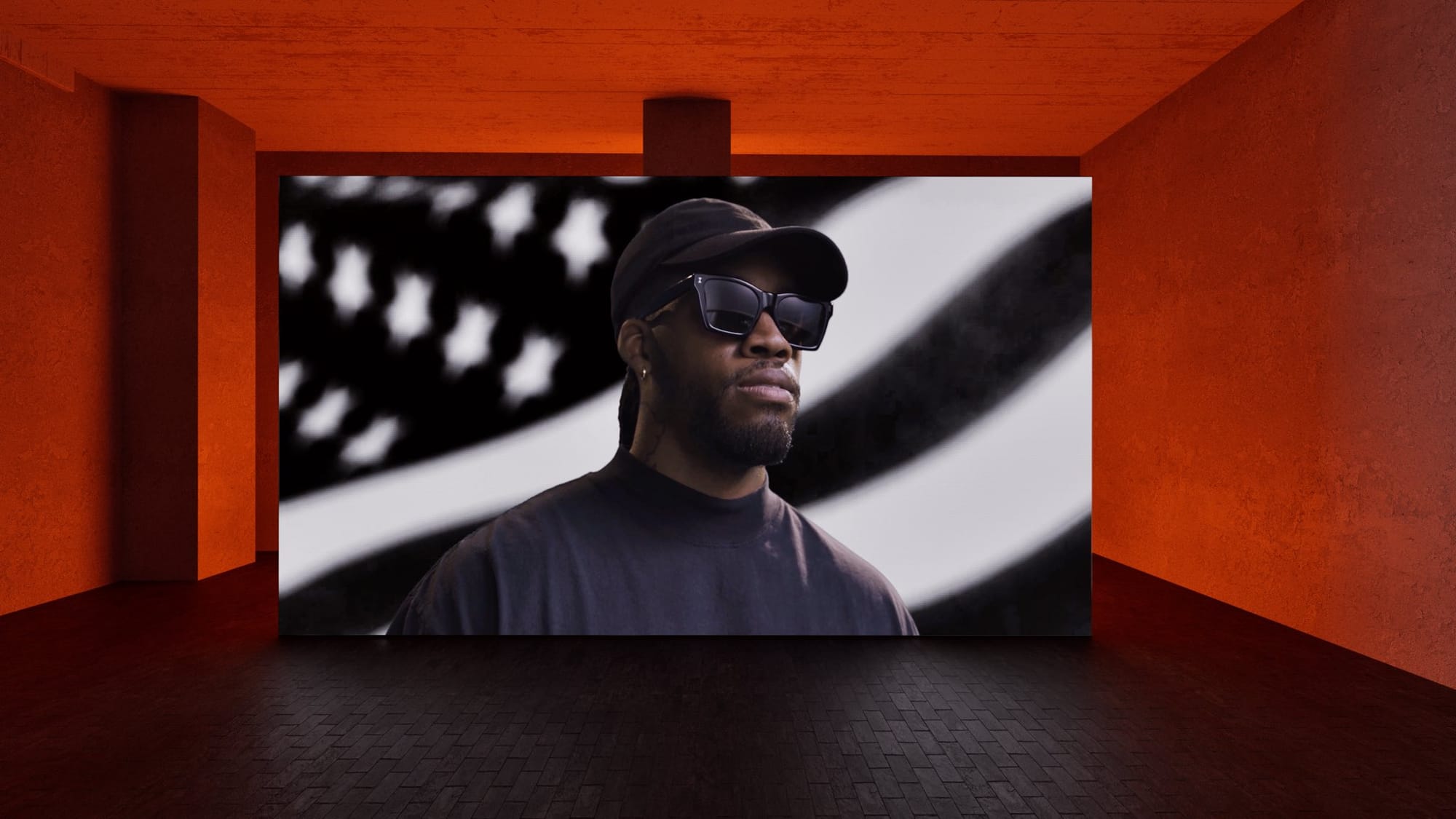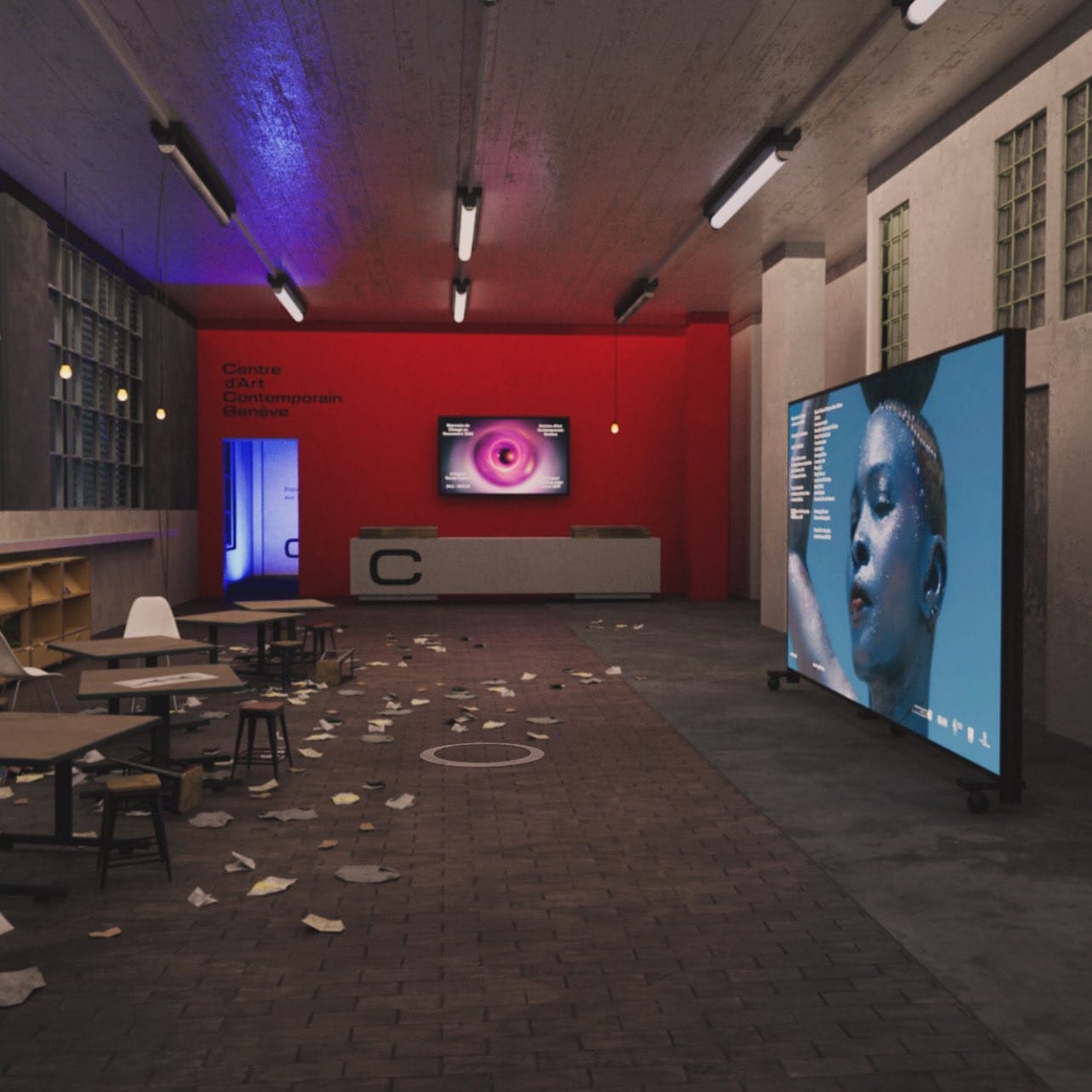
When you click to enter the online virtual exhibition component of Biennale de l’Image en Mouvement from the landing page, you are immediately dropped into what appears as a typical street view on Google Maps. After a few seconds the image slowly begins to rotate in circular pans to allow you to take in the immediate environment, which is a representation of a block in the city of Geneva where Centre d’Art Contemporain is located – a post-industrial building that is the site of the Biennale exhibition. A low hum of street noise fills the soundscape, along with nondescript mood music that seems to be emanating from one of the Biennale’s commissioned video installations inside the space.
After 20-30 seconds a progress bar appears at the bottom of the screen, indicating that a new installation view is loading, and which ports the viewer to an interior space in the building. We are then able to begin to see the exhibition layout and some of the works of art that are part of the show, while the gradual circular pans continue with each new position. The quality of these 3D-scanned installation views are outstanding, and an automatic montage is generated that allows the viewer to watch the entire exhibition like an extended trailer and to get an overview of the artists and works on display – all without having to execute a single additional click or swipe.

Of course, one is also able to fully interact with this virtual exhibition, to control the mise-en-scene, so to speak. Angles of view can be panned across 360-degrees, the image can zoom in or out, linear movement can be evoked across clickable marks on the floor, and metadata about the works and the artists can be accessed through pop-up or slide-out menus emanating from info points near the installations. Most users will be very well-acquainted with this level of interactivity and control, but the sequence of successive automatic circular views becomes a pleasurable respite from the burden of near-infinite choice. It serves as a way to give yourself up to the show, to allow its numerous impressions to wash over you at an unpredictable order and pace. One’s positioning within the larger exhibition plan might be a bit disorienting – as is often the case with IRL experiences of sprawling exhibitions – but by abandoning the innate impulse to map and conquer the territory one is able to devote additional attention to the qualities of the built environment, or how the videos relate to the material elements of the installations, and also the color palette of the exhibition.
Among that panorama of hues are beautiful midnight tones, deep purples, shining metallic blues, neon reds. It almost feels like we are exploring a cyberpunk world, and indeed many of the works on display are concerned with visionary technologies of the present and their postulated utilities of the future. The Biennale is titled “A Cosmic Movie Camera” (cf. the concurrent Shanghai Biennale and its titular focus on “Cosmos Cinema”), which references the photon ring surrounding a black hole that conceivably contains all the images of the universe across all zones and timelines. That is a massive proposition, even for a world in which we are flooded with images. Rarely is cinema as an art form evoked with such galactic weight (excepting Alexander Kluge, who suggested that the universe itself is the original cinema, and who was quoted by the curators of the Shanghai Biennale in their catalog notes). If the cosmos is a camera, and the universe a screen, what does it really mean to be a moving image artist, or to be a cinephile for that matter?

The curators Nora N. Khan and Andrea Bellini offer us a selection of artists that keep the cosmos in sight but focus directly on terrestrial life as affected by advances in ways of seeing and acting in excess of the limits of knowledge and experience. These artists include Lawrence Lek, Danielle Brathwaite-Shirley, American Artist and others. The virtual representation of the exhibition was created and organized by Peter Wu+ of EPOCH Gallery. This online show will exist beyond the run of the Biennale, making it a wonderful reference point and a satisfying visit in its own right. In terms of the interface, the seamless and comprehensible navigation combined with a photorealistic precision is impressive. For archival purposes, for the act of translation and expansion into an immersive realm, the entire endeavor is a success. The internet can also be thought as a cosmic movie camera – with the gravitational trappings of an informational black hole always present. Make repeat visits to this digital Biennale, examine the works within it more closely, and ingest the schematics on how to get and stay free.

